Two large conducting plates X and Y. each having large surface area A (on one side), are placed parallel to each other as shown in figure (30-E7). The plate X is given a charge Q whereas the other is neutral. Find (a) the surface charge density at the inner surface of the plates X, (b) the electric field at a point to the left of the plates, (c) the electric field at a point in between the plates and (d) the electric field at a point to the right of the plates.

(a) For the surface charge density of a
single plate. Let the surface charge density
at both side be σ1andσ2.
Now electric field at both ends
=σ12eplison0andσ22eplison0
Due to net balanced electric field on plate
and r1equal→r2
q1=q2=Q2
Net surface charge density = Q2A
(b) Electricfield to the left of the plates
Since r=Q2A .
Hence, electric field = Q2A(ε0)
This must be directed towards left as 'X' is
the charge plate.
(c) and(d) here in both the cases the
charged plate 'X' acts as the only source of
electric field, with +ve in the inner side
and'Y' attracts towards it with -ve in its
innerside. So, for the middle portion
E is towards right.
(d) Similarly for extreme right the outer
side of the 'Y' plate acts as +ve and hence
it repels to the right with E = Q2Aε0.
Topper's Solved these Questions
- BOOK - HC VERMA ENGLISHCHAPTER - GAUSS LAWEXERCISE - Short Question7videos
GAUSS LAW
- BOOK - HC VERMA ENGLISHCHAPTER - GAUSS LAWEXERCISE - Objective 28videos
GAUSS LAW
- BOOK - HC VERMA ENGLISHCHAPTER - ELECTROMAGNETIC WAVESEXERCISE - Exercise8videos
ELECTROMAGNETIC WAVES
- BOOK - HC VERMA ENGLISHCHAPTER - GEOMETRICAL OPTICSEXERCISE - Question For short Answer18videos
GEOMETRICAL OPTICS
Similar Questions
Two conducting plates M and N, each having large surface area A (on one side), are placed parallel to each other in figure. The plate M is given charge Q1 and N, charge Q2(<Q1). Then
 View Solution
View SolutionTwo conducting plates X and Y, each having large surface aera A (on one side), are placed parallel to each other as show in figure.

Find the surface charge density at the inner surface of the plate X.View SolutionThree identical metal plates with large surface areas are kept parallel to each as shown in figure (30-E8). The leftmost plate is given a charge Q, the rightmost a chrgear2Q and the middle one remains neutral. Find the charge appearing on the outer surface of the rightmost plate.
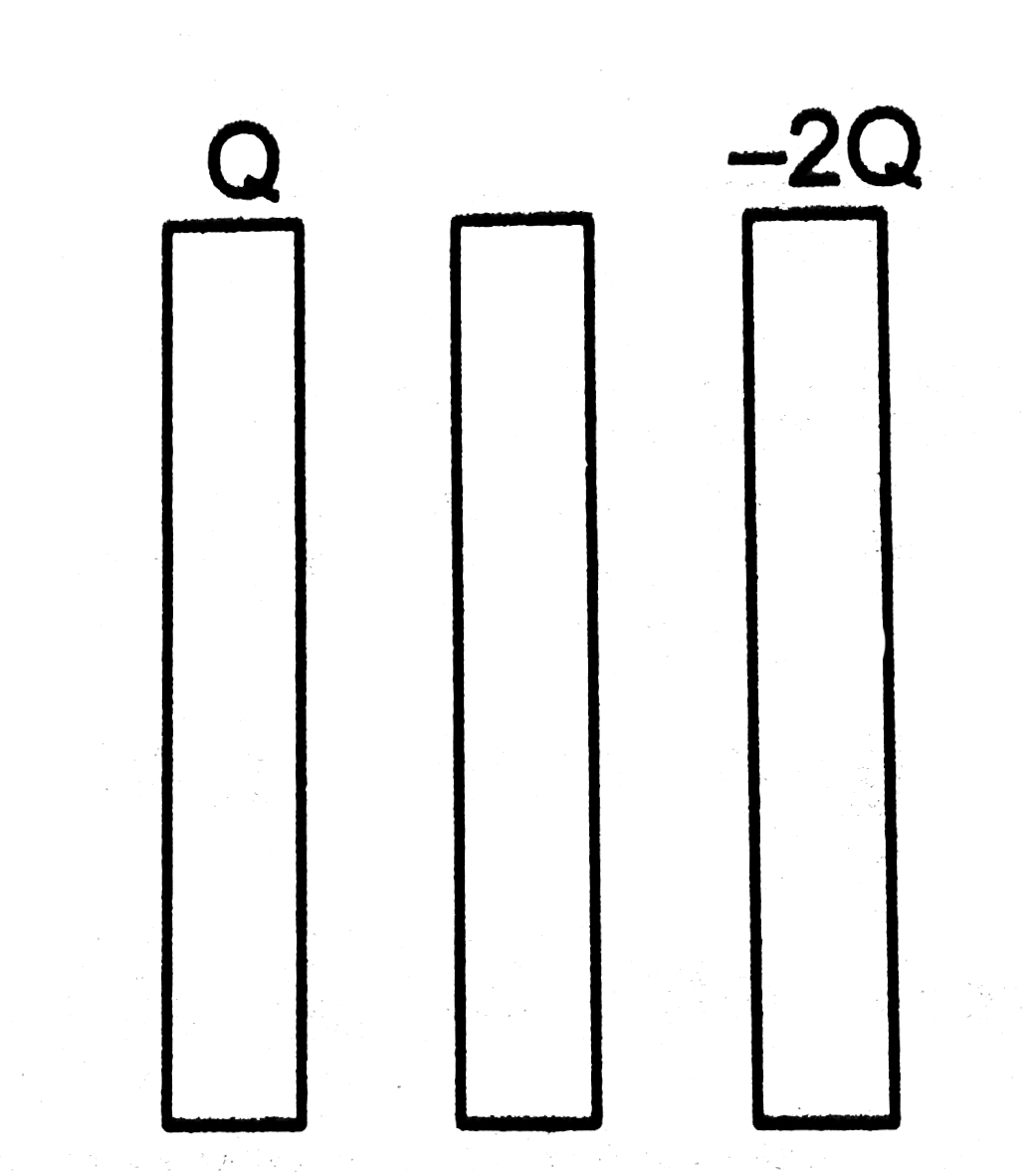 View Solution
View SolutionFor the system shown in capacitance is C The left plate is given a charge Q1 and the switch is closed.
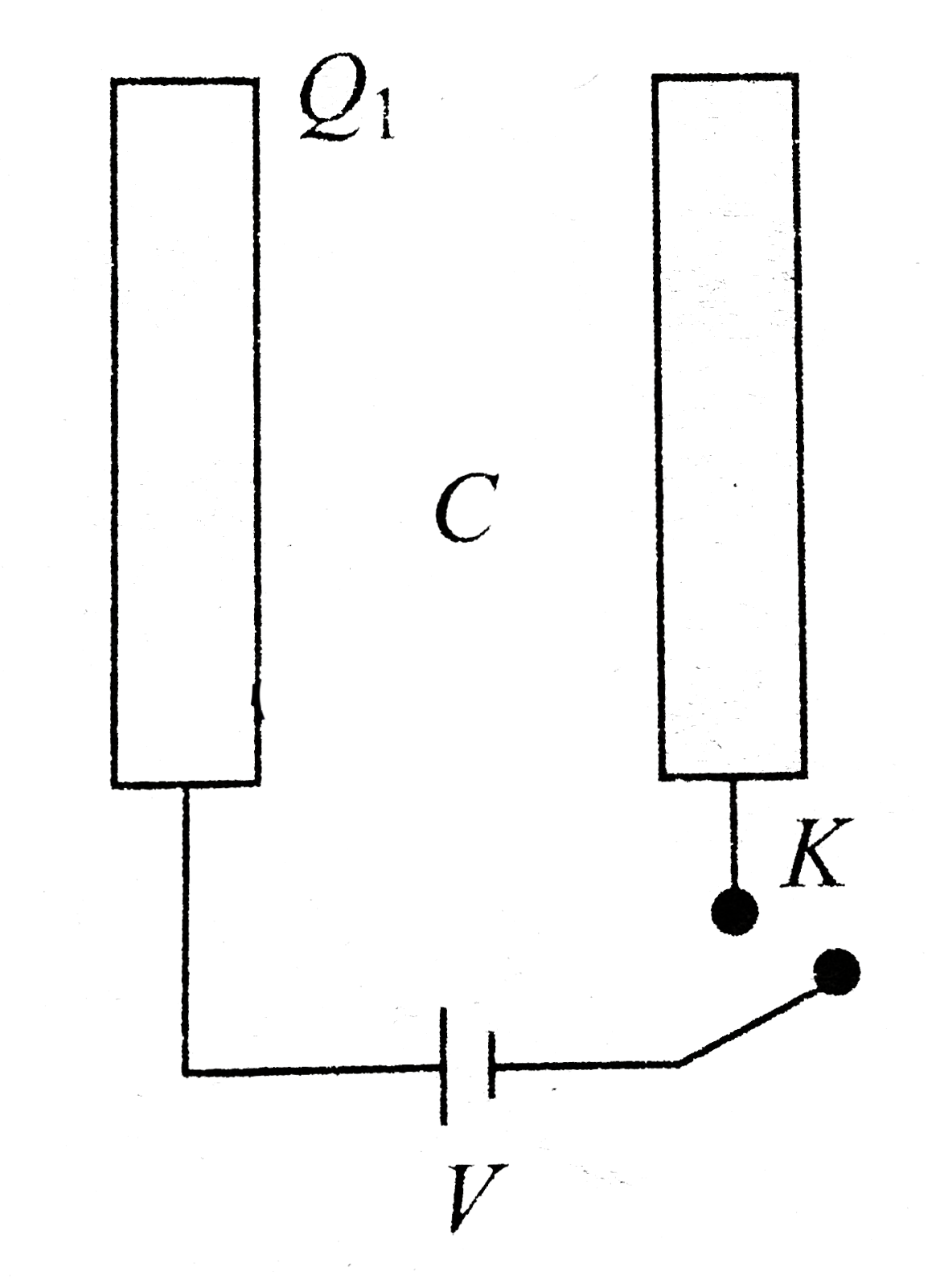 .
.
Find the charge appearing on the inner face of the left plate.View SolutionEach of two large conducting parallel plates has one sided surface area A. If one of the plates is given a charge Q whereas the other is neutral, then the electric field at a point in between the plates is given by
View SolutionFour metallic plates each with a surface area of one side A are placed at a distance d from each other as shown. Then, the capacitance of the system between X and Y is
 View Solution
View SolutionAn uncharged conducting large plate is placed as shown. Now an electric field E towards right is applied. Find the induced charge density on the right surface of the plate.
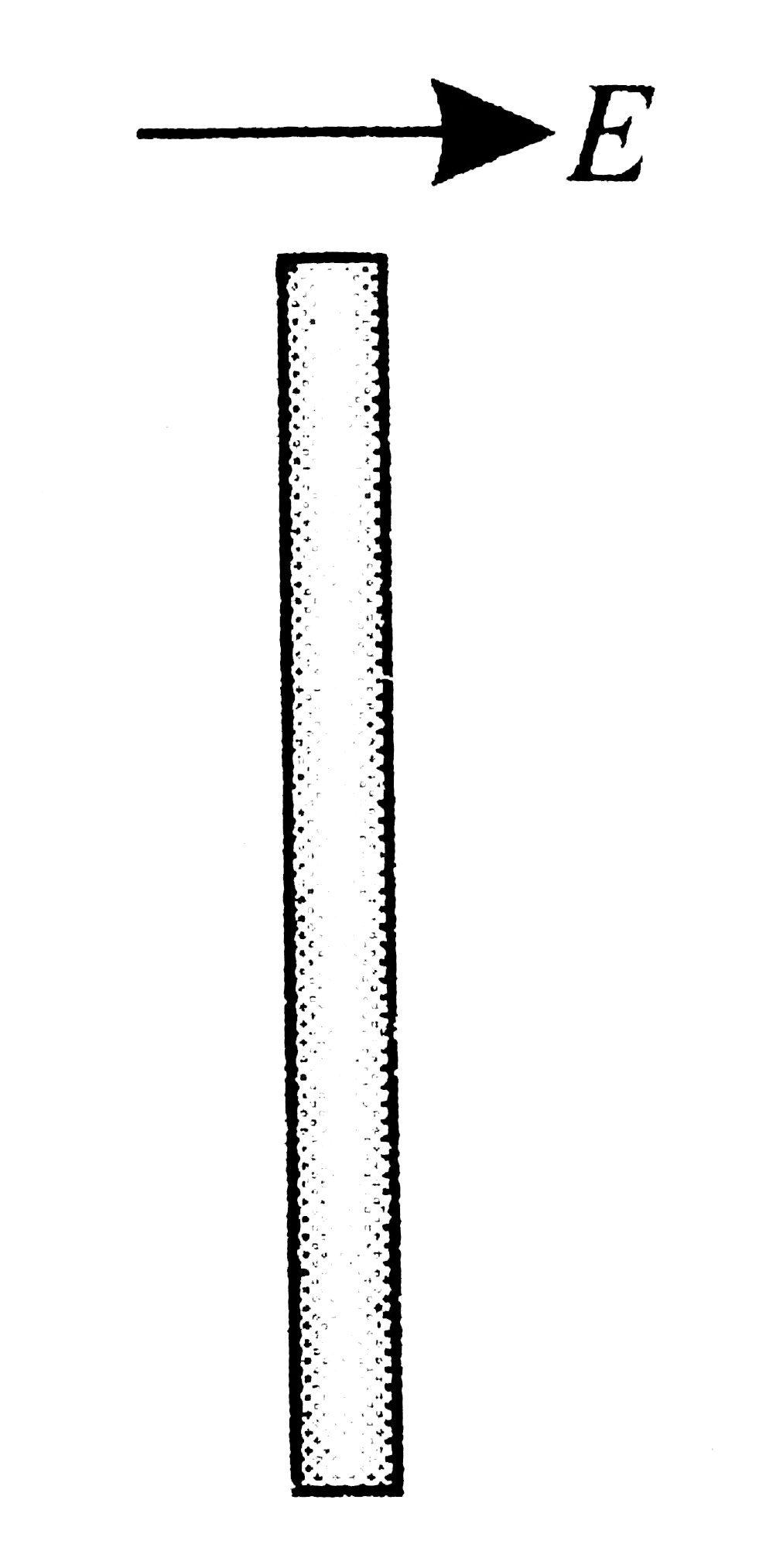 View Solution
View SolutionTwo large conducting plates are placed parallel to each other with a separation of 2.00 cm betweeen them. An electron starting from rest near one of the plates reaches the other plate in 2.00 microseconds. Find the surface charge density on the inner surfaces.
View SolutionTwo infinite, non-conducting sheets of charge are parallel to each other, as shown in figure. The sheet on the left has a uniform surface charge density σ, and the one on the right has a uniform charge density −σ. Calculate the electric field at points (a) to the left of, (b) in between, and (c) to the right of the two sheets.
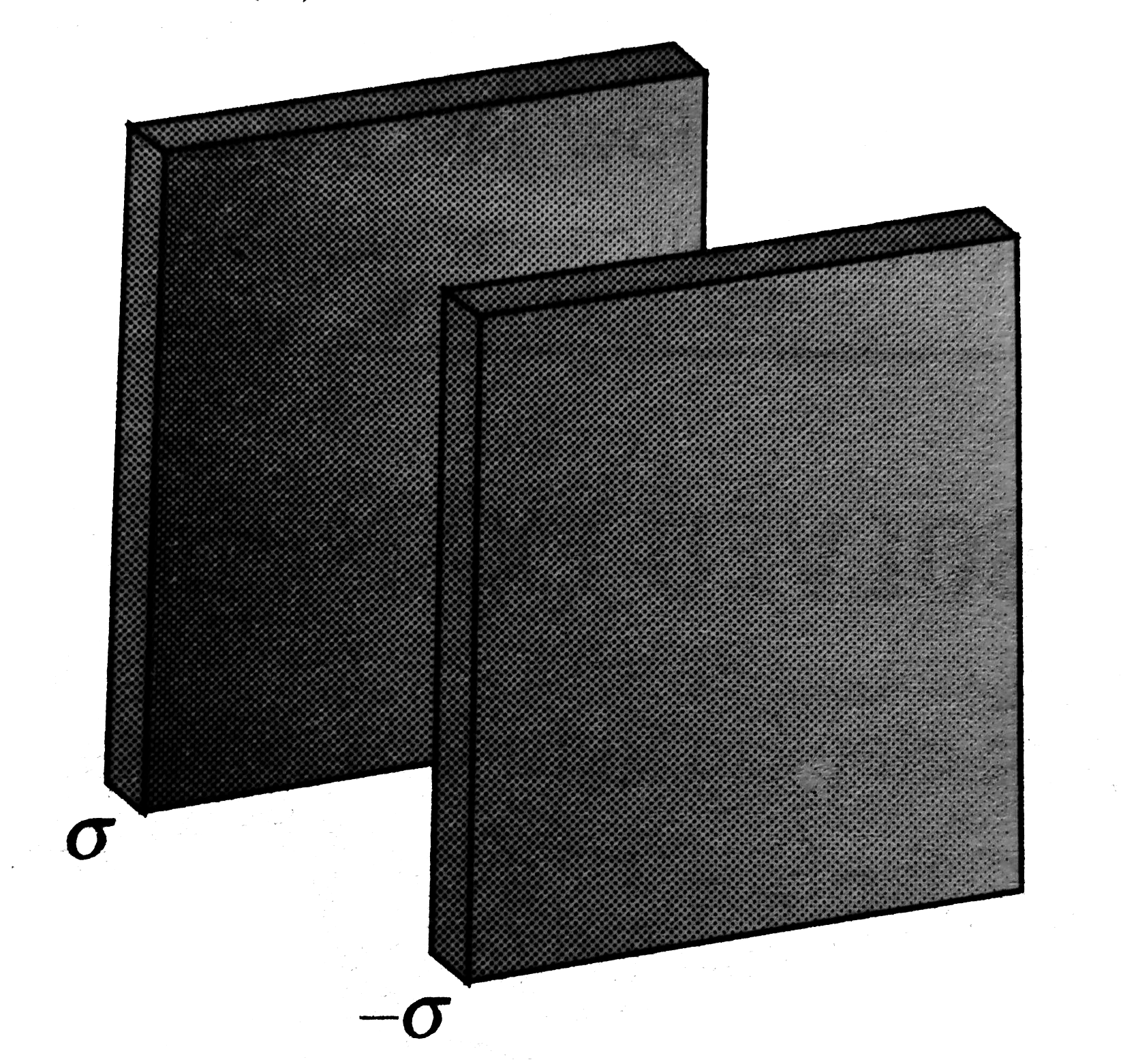 View Solution
View SolutionTwo large conducting plates are placed parallel to each other nad they carry equal and opposite charges with surface density σ as shown in figure (30-E6). Find the electric field (a) at the left of the plates, (b) in between the plates and © at the right of the plates.
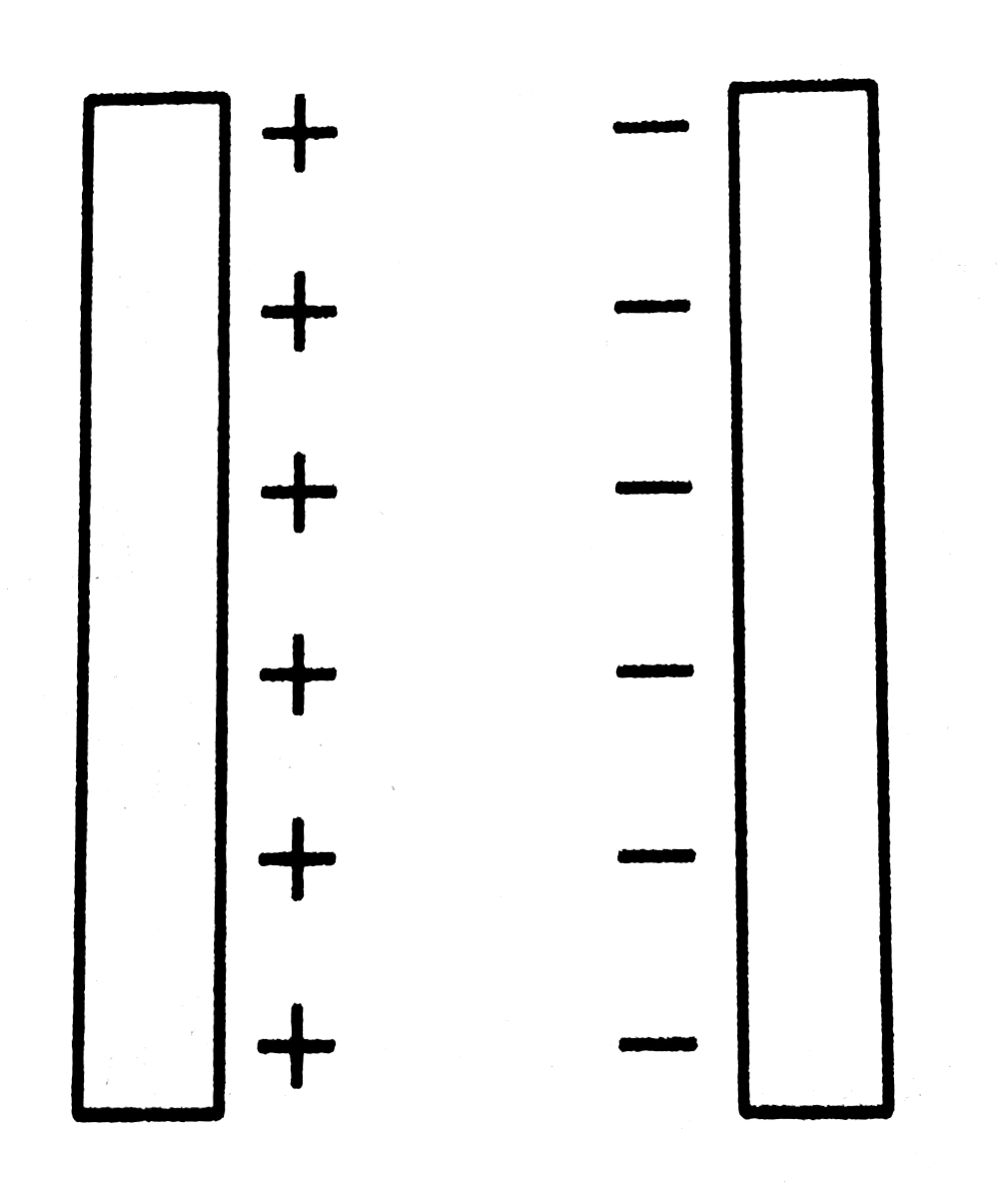 View Solution
View Solution

